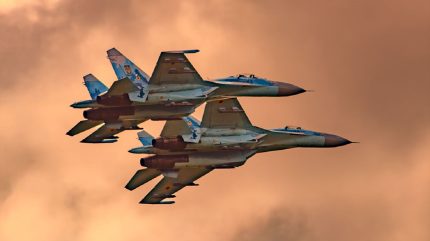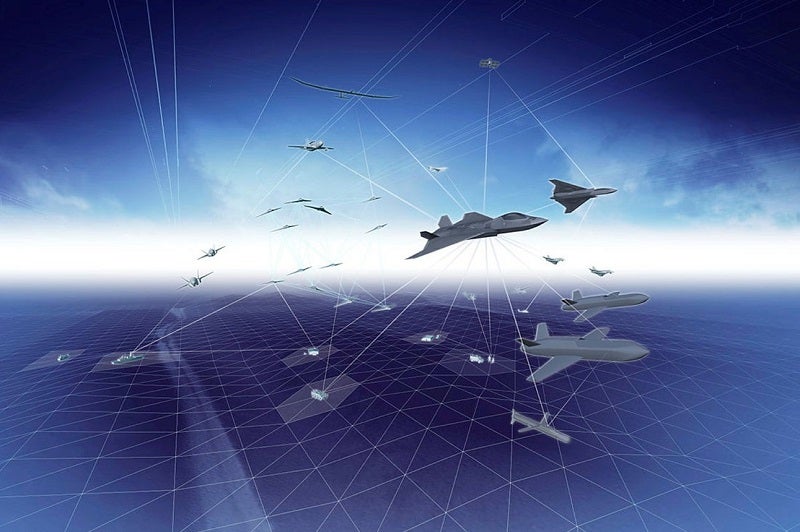
An annual gathering of air and space force chiefs representing 64 nations, academia and industry were hosted by the UK Chief of the Air Staff, Richard Knighton, on 17 July 2024, opened to a sobering assessment of the Russia-Ukraine war.
“We need to be ready by 2028 to war fight against the Russians because we may not have a choice about it,” maintained Justin Bronk, a senior research fellow in airpower and technology at the British security think tank, the Royal United Services Institute.
This examination of the Russian threat perception as an imminent crisis led to a corollary that air forces do not have the time to buy new platforms; that only so much can be prepared in such a short amount of time.
“If you’ve got aircraft on order now, great, keep them in the pipeline. But other than that you don’t have time to get new orders delivered. Buy ammunition, buy spares, increase the size of your maintenance contracts for your key fleets,” he beseeched.
What about GCAP?
This assessment would put the trilateral Global Combat Air Programme (GCAP) to develop a sixth-generation fighter jet between Britain, Italy and Japan into question.
GlobalData intelligence estimates the contract will cost the UK up to $11.3bn (£8.68bn) over the next decade.

US Tariffs are shifting - will you react or anticipate?
Don’t let policy changes catch you off guard. Stay proactive with real-time data and expert analysis.
By GlobalDataThe aircraft, deisgnated ‘Tempest’, will be highly modular. Team Tempest is aiming to incorporate emerging technologies including artificial intelligence, directed energy weapons and swarming technology to control accompanying collaborative and autonomous drones as part of a hybrid unit.

Substantial progress has already been made by the former UK Government to bring the project over the line with billions in funds and the establishment of a legal framework at the end of last year.
The former UK Defence Procurement Minister, and now Shadow Defence Secretary, James Cartlidge, affirmed the need for a strict timeline for the costly programme, while convinced the administration could simultaneously deliver on other major commitments, such as the urgent need to support Ukraine’s war effort. This was signalled by the UK’s largest military package donated in April, which the new Labour Government have pledged to expedite over the next hundred days.
“GCAP is completely impossible if there’s a war in Europe in the coming five years, because the global economy will be completely tanked. We’ll have to devote everything to fighting that war,” insisted Bronk.
“So if you care about GCAP, you need our defences to be in order so that we do not have to fight the Russians this decade. Otherwise none of those programmes are going to happen.”
Working together as a form of deterrence
Long-term commitments such as GCAP, and the trilateral AUKUS alliance in the naval domain, are themselves a form of deterrence for two reasons.
First, Britain and its allies can leverage their collective defence and industrial capabilities as a joint force. This would help compete with the output of Russia, an isolated adversary relying on the few sources of defence industrial cooperation it can find from sanction loopholes and similarly rogue states such as North Korea.
Second, a country’s efforts to expand its sovereign defence industrial base signals military readiness, or at the very least a willingness to achieve it.
During the conference, a representative from BAE Systems – a UK contractor in the GCAP supplier ecosystem – offered their thoughts on the need to balance continued investment in defence industry programmes such as Tempest, while also focusing on meeting Europe’s immediate threat from Russia.
“It’s about doing both of those things. It’s about keeping the [industry] machine going.”
Regaining the initiative – why the Russian threat ought to be prioritised
The immediate needs of ammunition, spares and sufficient aid to Ukraine to prepare for an imminent Russian threat is not diametrically opposed to long-term platform procurement.
Yet, this form of long-term deterrence does not negate the reality that Bronk has put forward. While these projects progress in the background, due consideration for the Russian threat ought to be prioritised.
Ironically, thanks to a natural reluctance of militaries to pivot their forces entirely to the counter-insurgency warfare that dominated the last two decades, Bronk points to the late Cold-War era inventories designed for peer-on-peer conflict, much of which is left over from the sleepy stocks of the 1980s and 1990s that continue to be of use today.
“What do we all fly? Typhoons built to kill [Su-27] Flankers, F-35s built to take out Russian air defence networks. What do we fire? AMRAAMs built to kill Flankers, Meteor built to kill Flankers. What do we have in the stocks? Brimstone built to kill Russian tanks, Maverick built to kill Russian tanks.”



